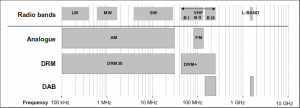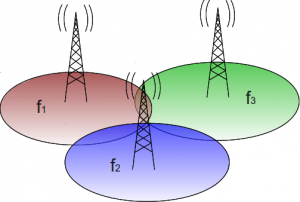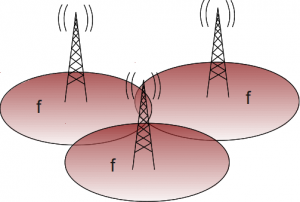CMFE is comprised of experts for a wide range of topics related to Community Media. In this series, we want to collect documents, information and expertise. Watch the series grow…
Within CMFE, digitalisation is one of the most discussed topics – for insiders, motivations of regulators and the industry seem far too obvious, for outsiders, the whole issue raises a lot more questions than expected. Our experts have tried to collect relevant information and present it in a comprehensible way: either as pdf or on this page. Open here: CMFE_Digital_Radio_1 (pdf)
Community Radio in the Digital Age
Community media have been recognized not only by the United Nations and UNESCO but also by European institutions as a distinct and complementary third media sector next to public and commercial media. The European Parliament Resolution 2008/2011 (INI) and the 2009 Declaration of the Committee of Ministers of the Council of Europe on the role of community media both acknowledge the social value of community media as a source of local content, cultural and linguistic diversity, media pluralism, inclusion and intercultural dialogue and recommend to member states to give legal recognition, access to spectrum (analogue and digital) and funding to the sector. In particular, the EP Resolution “Calls on the Commission to take into account community media as an alternative, bottom-up solution for increasing media pluralism when designing indicators for media pluralism.”
Therefore community radio as the third pillar of the broadcasting sector needs to be present on all platforms that are commonly used to listen to radio. Radio digitalization, terrestrial and Internet distribution could offer the chance to have more channels for community radio.
However, every channel has its advantages and disadvantages for the special needs of community radio stations. We want to give a short overview about the available techniques for radio.
Terrestrial Propagation
Especially for community radio the free-to-air distribution via broadcasting technologies is essential as it offers the lowest threshold for listeners. At the same time running own propagation infrastructure is essential for an independent radio operation.
For Europe two digital systems are fitting into the frequency grid and will be considered here:
Digital Audio Broadcast (DAB/DAB+) and Digital Radio Mondiale Mode E (DRM+).
Both systems are more frequency economic than the analogue radio-standards, they offer more transmitters/bandwidth so more programs could fit into the available spectrum. Both systems offer the possibility to setup Single Frequency Networks to make frequency planning easier and enhance reception quality.
Analogue radio (left): Every transmitterhas to run on a different frequency
Digital radio (right): Adjacent transmitters can run on the same frequency without disturbing each other in a Single Frequency Network
They both offer the possibility to add data services and to implement hybrid radio to connect terrestrial radio to internet channels (e.g. RadioDNS).
Comparison of the bandwidth of different digital radio systems to analogue FM radio
The main technical difference is the bandwidth of the system.
 DAB/DAB+ (the + stands for the more modern AAC+ audio codec) is a broadband multiplex system with a bandwidth of 1.5 MHz (FM has ~150 kHz). Within one DAB+ channel up to 16 radio programs can be transmitted. The huge bandwidth has its advantages for radio stations with a lot of radio programs as many public radios but it makes it very unflexible if you want to run a single local radio station like a community radio station. It also makes it difficult to run your own transmitter.
DAB/DAB+ (the + stands for the more modern AAC+ audio codec) is a broadband multiplex system with a bandwidth of 1.5 MHz (FM has ~150 kHz). Within one DAB+ channel up to 16 radio programs can be transmitted. The huge bandwidth has its advantages for radio stations with a lot of radio programs as many public radios but it makes it very unflexible if you want to run a single local radio station like a community radio station. It also makes it difficult to run your own transmitter.
Some countries as France and Switzerland have a lot of community or local radio stations per city. Here some community radios are conducting trials to run own DAB+ transmitter with open source software (see opendigitalradio.org).
In many countries there are not as much community or local radios to run a whole multiplex. So local radios have to go to the next bigger multiplex, e.g. they have to rent a stream in a regional multiplex which will be much more expensive.
In this context a digitalization with solely DAB+ could be a significant risk for the future of Community Radios.
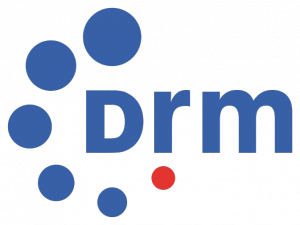 Here DRM+ (the + here stands for DRM Mode E which is designed for the VHF frequencies, DRM is also running on shortwave and mediumwave) would be more feasible. It has a bandwidth of 96 kHz so it offers the same flexibility as FM. One community radio station can run its own transmitter in the same way as an FM transmitter. It also offers the possibility to transmit up to 3 radio programs, but then with some more power. As DRM+ was only standardized in 2012 up to now there are no end user receivers available. As it would be a good amendment to offer all community radios and also local radios in general a place in the digital world, DRM+ should be integrated in receiver chips as soon as possible. If too many DAB+ only radios are sold, the parallel operation of DRM+ transmitters will not be reasonable at some point.
Here DRM+ (the + here stands for DRM Mode E which is designed for the VHF frequencies, DRM is also running on shortwave and mediumwave) would be more feasible. It has a bandwidth of 96 kHz so it offers the same flexibility as FM. One community radio station can run its own transmitter in the same way as an FM transmitter. It also offers the possibility to transmit up to 3 radio programs, but then with some more power. As DRM+ was only standardized in 2012 up to now there are no end user receivers available. As it would be a good amendment to offer all community radios and also local radios in general a place in the digital world, DRM+ should be integrated in receiver chips as soon as possible. If too many DAB+ only radios are sold, the parallel operation of DRM+ transmitters will not be reasonable at some point.
Multichip receiver should support all standards soon to keep the possibility open to choose the most suitable system.
As the success of digital radio is not granted, and up to now the listenership on DAB/DAB+ is not very large, leaving FM distribution now will end up in a significant loss of listenership.
Internet distribution
Internet radio has the big advantage that you don’t need a licence. There is lots of bandwidth and worldwide reception. It is cheap as long as you don’t have millions of listeners and you have the possibility to offer direct feedback and joint program production. Great stuff!!
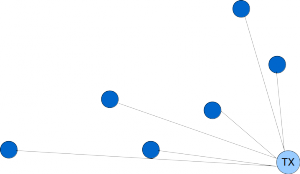
But with the actual streaming technologies you always build up a unicast connection between the server and each listener. This means is you have a lot of listeners you will have a lot of server costs.
You can’t listen to internet ‘free-to-air’, you always need some kind of internet contract as in most of the locations unfortunately there is no free Wifi everywhere. You always depend on internet providers and at the moment there is a lot of discussion about netneutrality. Hopefully also in the future every content will be treated the same in the internet. If netneutrality falls it could be that internet radio listeners will have to pay extra. Mobile internet reception also is still a problem.
 Most of the Community Radios use Internet streaming and podcasting as additional way to distribute their program. Internet distribution is a great addition to terrestrial propagation but due to its restrictions, at the moment not at all an alternative.
Most of the Community Radios use Internet streaming and podcasting as additional way to distribute their program. Internet distribution is a great addition to terrestrial propagation but due to its restrictions, at the moment not at all an alternative.
Mobile broadband
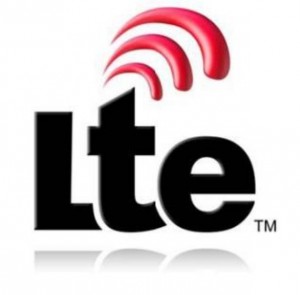 Mobile broadband is evolving rapidly. eMBMS (enhanced Multimedia Broadcast Multicast Service) offers a possibility to broadcast over LTE broadband networks. It uses a part of the LTE signal from every basestation in the desired propagation area and get them synchronized to an SFN. There has been tests to broadcast video over eMBMS at sport events. But an affordable application for community radios over eMBMS at the moment is not very probable.
Mobile broadband is evolving rapidly. eMBMS (enhanced Multimedia Broadcast Multicast Service) offers a possibility to broadcast over LTE broadband networks. It uses a part of the LTE signal from every basestation in the desired propagation area and get them synchronized to an SFN. There has been tests to broadcast video over eMBMS at sport events. But an affordable application for community radios over eMBMS at the moment is not very probable.
EU policy
We find also support in two important European policy documents:
1. The Declaration of the Committee of Ministers on the role of community media
in promoting social cohesion and intercultural dialogue as adopted in 2009 by the Committee of Ministers of the 47 members states of the Council of Europe, in where it “Draws attention to the desirability of allocating to community media, to the extent possible, a sufficient number of frequencies, both in analogue and digital environments, and ensuring that community broadcasting media are not disadvantaged after the transition to the digital environment.”
2. European Parliament resolution of 25 September 2008 on Community Media in Europe, in where the Parliament “Calls on Member States to make television and radio frequency spectrum available, both analogue and digital, bearing in mind that the service provided by community media is not to be assessed in terms of opportunity cost or justification of the cost of spectrum allocation but rather in the social value it represents.”
We also call:
To provide specific legal and regulatory conditions that foster the development of the community radio sector in analogue and digital environments.
To ensure the equitable allocation of broadcasting spectrum between public service, commercial and community broadcasting services on analogue and digital platforms.
Community radio have to be present in all relevant propagation channels.
Further Resources and Articles (selection)
Digital Radio Resources: Links and Infos, Read more
DAB+: News from Vienna/Austria and SwedenRead more
Saxony-Anhalt Retaining FM Radio For Another Ten Year Read more
New Report on Future Platforms for Community Radio Read more
A digital transmission for Swiss community radios Read more
Student Radio Goes DRM+ in Germany Read more
Small-scale DAB Still Not a Solution for Local Radio Read more
Community Radio Makes Its Stand for FM Radio in Brussels Read more
CMFE Initiates DRM+ Digital Radio Trial in Sweden Read more
Digital Radio: CMFE and AMARC Europe sent letter to European Commission Read more
Response to CMFE/AMARC Letter to the Commissioner for the Digital Agenda Neelie Kroes on “Not leaving behind Community Radios in the digitization of Radio” Read more
Contacts (Board and Expert Group): Friederike Maier, Francesco Diasio, Jaqui Devereux, Lawrie Hallett, Henry Loeser, Helmut Peissl, Pieter de Wit and Christer Hederström

